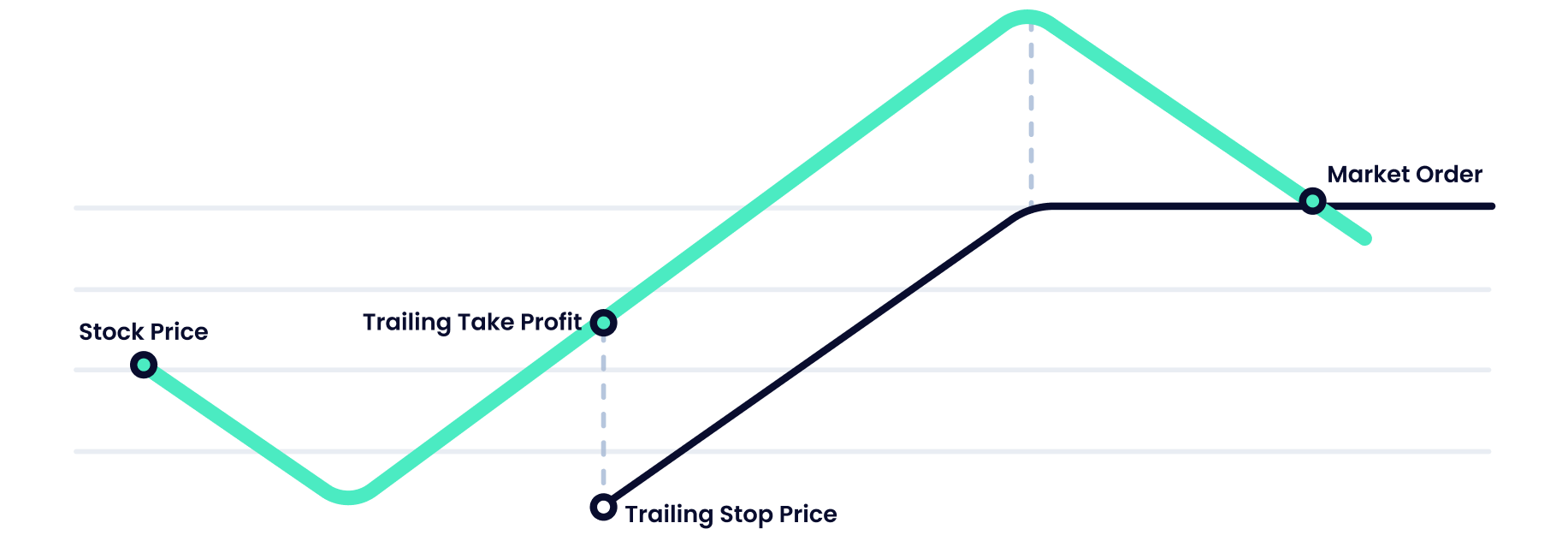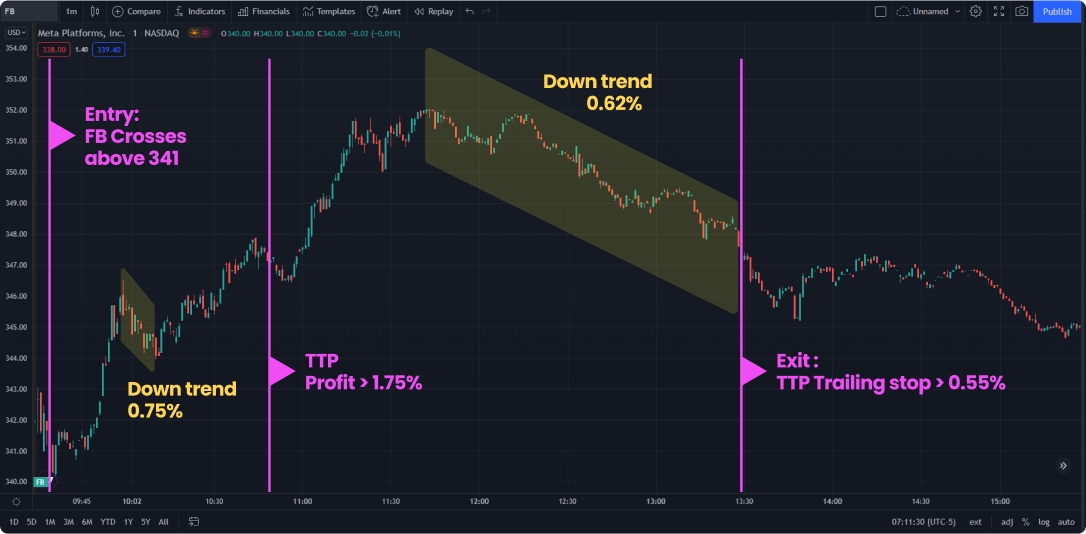Trailing Take-Profit allows a Trailing-Stop to trigger only after a certain profit was reached.
Learn how you can automate a Trailing Take-Profit with Capitalise.ai:
Successful Investors Typically Know their Exit Plan Before Committing Capital
Perhaps a more difficult question than “when or what to enter” into the market, is “when to exit” a trade or investment? Right? How many times have you checked your favorite asset in your portfolio, just to discover a price movement eliminating most or all the gained profit? This is a real issue for day-traders who are trading on movement as well as investors holding assets longer term. Whether you are day trading, swing trading or acquiring assets, professional investors and venture capitalists will always have an exit plan. An Exit Plan typically express itself in terms as an ROI (Return on an Investment). How long will it take for an investment to mature? What profit percentage seems worth investing in? Will accessing the funds be easier or more difficult?
Using a Take Profit Setting or even the more sophisticated Trailing Take-Profit setting on trades assists you in exiting trades while still profitable. Think of it as a manager depositing profits in your account instead of leaving funds in your register or even on the counter.
What is the Trailing Take-Profit (TTP)
Simply put, a Trailing Take-Profit (TTP) allows a trader to set their Trailing Stop-Loss (TSL) to trigger only after reaching a certain profit.
Meaning, the TTP follows the trend and sets to close the position beyond a specific amount of profit and before reaching a predetermined amount of loss.
Trailing Take-Profit Vs. Trailing Stop-Loss
The advantage of a Trailing Take-Profit over a Trailing Stop -Loss becomes obvious when one understands that a Trailing Stop-Loss may close a position following a correction that occurs immediately after the entry, missing any potential profits. A Trailing Take-Profit, on the other hand, closes the position only after the target profit was reached and the stop loss aspect after price corrects itself against the direction profit was made. 
How to set a Trailing Take-Profit with Capitalise.ai
Setting a Trailing Take-Profit requires two values:
- Set the Minimum Profit
First, set the desired ($) or percentile (%) profit at which the Trailing-Stop will become active. - Set the Trailing Stop
Then set the desired ($) or percentile (%) loss you could incur after reaching the minimum Profit. The position closes when the unrealized P&L drops below this value.

Read the full guide for setting a TTP on Capitalise.ai: How to close your position with Trailing-Take-Profit.
Avoid Large Corrective Losses
The below example will emphasize the power of TTP. The stock is Meta/Facebook (FB). This strategy entered a long/buy trade at 341, and set to close with a trailing take profit ((minimum) profit: 1.75%, TrailingStop: 0.55%).
In the screenshot below, the strategy kept the position open after the first rising candles, since the condition of profit>1.75 never reached its target. From a TTP Profit > 1.75%, the strategy looked for a trailing stop loss that is greater than (>) 0.55%.
Once that happens (the third yellow line), the position closed.

Now, there are three favorable results to appreciate:
- About 2.5% profits accumulated in less than 3 hours.
- These profits exceeded the desired profit minimum(1.75%).
- More importantly, the profits were claimed by the stop loss before a larger downtrend came later. If only using a Trailing-Stop Loss the strategy would have triggered an exit after the first downtrend (-0.75), leaving a profit of 0.9% and missing the uptrend that came after it and an additional 1.8% of profits accumulated.
Combine TTP with additional Exit Conditions
TTPs, when compared to TSLs, exhibit one downside in that TTPs expose trades and related funds potentially longer than a TSL. Since TTPs require an additional condition for when to stop, typically they do not stop as rapidly. For example, if the downtrend starts just at the entry, a TTP may take the position further down since no profits accrued. A typical way to get the most out of a TTP might include using it in combination with other exit conditions. So when implementing a TTP, a variety of tech indicators, time-based conditions or news events might best define a trader’s optimal exit strategy.
For example:

Strategize Trades like a Human. Execute Trades like a Machine.
Automate your Profit Protection and Risk Management with Capitalise.ai
With Capitalise.ai days traders and investors test and automate any trading scenario using a simple and intuitive interface. Traders require no coding or technical knowledge. Simply type in your trading strategy in everyday English and Capitalise.ai monitors the markets 24/7 for you. Once your conditions apply, trading orders automatically transmit to your trading account for execution.
